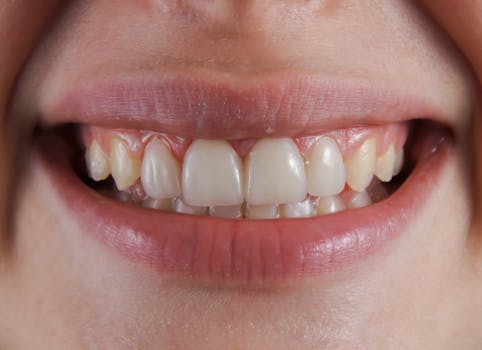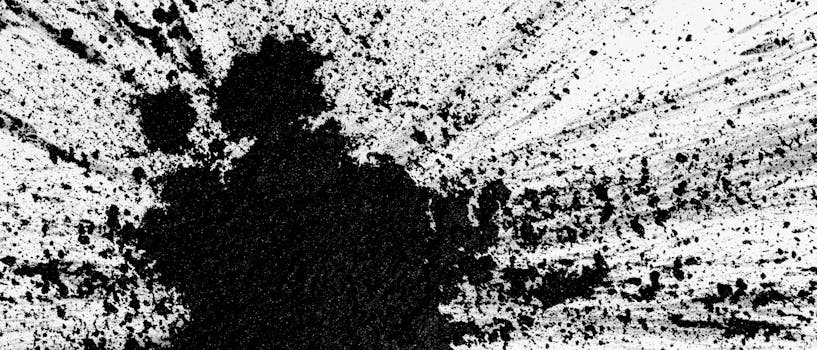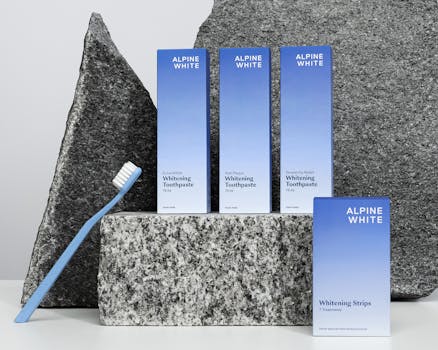The best bleaching methods and everything you need to know about them
White teeth are important to you and you are thinking about whitening them? However, you would like to find out more about how it works, the prerequisites, methods and health risks. Then this article is just right for you: Find out everything about tooth whitening.



A white smile - who wouldn't want that? However, very few of us have it naturally. It is quite normal for teeth to discolor with age. Careful oral hygiene and professional cleaning can slow down the process. However, stopping tooth discoloration altogether is virtually impossible.
To get the best out of your teeth, however, you can resort to cosmetic dentistry at home or professional teeth whitening at the dental office.


Get the natural whiteness of your teeth back in just 3 days. Perfect for special occasions. 7 treatments included (7x 2 strips).
Reasons for whiter teeth
Our teeth have a natural color. On top of this lies a transparent enamel. This enamel can lead to discolored teeth due to build-up.
Causes for superficial tooth discoloration (extrinsic)
- Coffee, black tea
- Red wine
- Fruit juices
- Spices like curry or saffron
- Soft drinks
- Nicotine
- Dental fillings
- Medicines
- Dental fluorosis (too much fluoride)
Causes of discoloration from inside the tooth (intrinsic)
- Age
- Inadequate root canal treatment
- Deficiency diseases (calcium, vitamins)
- Dead nerve, accident, bleeding
- Certain medicines (e.g. tetracycline)
Food and stimulants are the most common triggers for tooth darkening. In addition, there is a natural, unstoppable process. Nevertheless, a white and brighter smile does not have to remain a pipe dream.
You can find out more about tooth discoloration and how to whiten your natural teeth without bleaching products in the article "Removing tooth discoloration". You will also find tips on prophylactic and therefore the natural whitening process without any damage.


Gently achieve whiter teeth with our pain-free in-office bleaching. Carried out by our specialised dental staff.
- Naturally white teeth
- Effective tooth whitening without peroxides
- No change in the tooth structure
How does teeth whitening work?
Almost all methods contain carbamide peroxide. This includes:
- Hydrogen peroxide (H2O2)
- Carbamide
Hydrogen peroxide discolors the color pigments created by tooth discoloration without dissolving them out of the tooth enamel. The carbamide in turn slowly releases the hydrogen peroxide.
The fact that teeth can be whitened with hydrogen peroxide was described as early as 1895 by the American Journal of Dental Science. Hydrogen peroxide is generally used for:
- Tooth whitening
- Hair bleaching
- Disinfecting wounds
Requirements for teeth bleaching
You must fulfil the following conditions for an optimal result:
- Good oral health
- Healthy teeth
- No gingivitis
- Existing fillings are tight
- Teeth affected by caries have been decontaminated
- Not pregnant or breastfeeding
- Of full age
- No serious previous illnesses
To be sure that you achieve the desired result, we recommend that you have your teeth professionally cleaned no longer than two months before whitening.
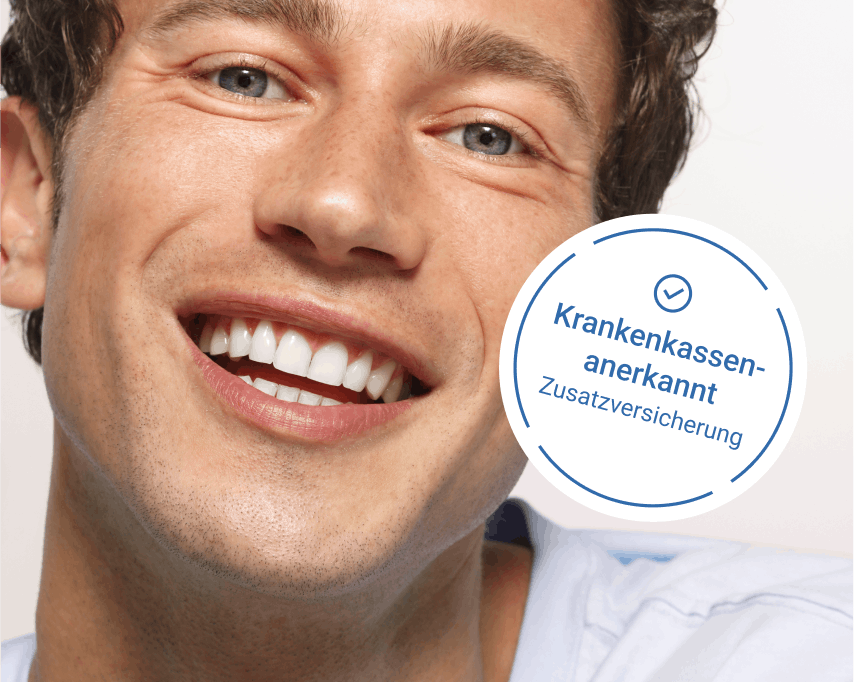
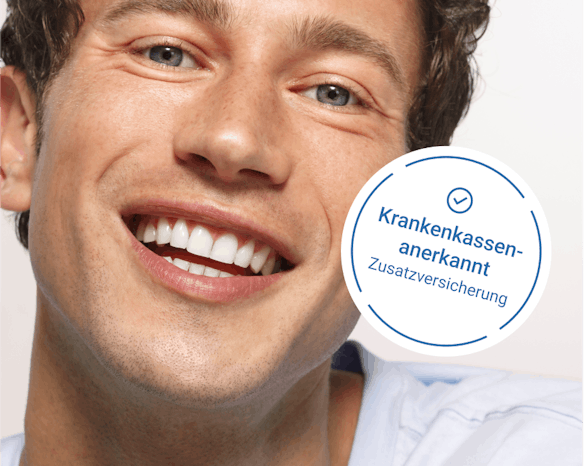
For a healthy mouth and beautiful teeth, regular professional teeth cleaning is essential. Our specialists detect early signs of caries and prevent them.
- Personalised dental hygiene
- Gum check & caries control
- Painless cleaning with AIRFLOW
Bleaching treatments
There are several methods you can use to achieve a brighter smile. Which method is best for you depends on the condition of your teeth.
- Power bleaching (in the dental office)
- Internal bleaching (in the dental office)
- Home Bleaching (at home)
Are you confused by the variety of methods? We briefly explain the individual methods.
Power bleaching
With power or in-office bleaching, your dentist covers your gums. A gentle clamp holds your mouth open. She or he applies a lightening gel to your teeth, in which the concentration of peroxide is 15-20%.
After the bleaching gel has worked in, it is irradiated with a special lamp (UV light, laser or LED). Depending on the goal, the dentist may repeat this procedure several times.
There is significant tooth sensitivity in the first few days after in-office bleaching. You should avoid smoking and avoid staining foods (such as aubergines).
If you want to see quick results, in-office bleaching is the ideal method. We offer this method in our Dental Studios in Zurich. You will receive professional advice and care from our dental hygienists. You can find out more about dental hygiene in this article.
Internal bleaching
If regular teeth whitening does not achieve the desired effect, which can be the case especially after root canal treatment or with dead teeth, internal bleaching provides a remedy. In a multi-stage process, your dentist lightens the affected tooth from the inside.
A highly concentrated bleaching agent acts on the dentin. Only when your desired degree of whitening has been achieved does the dentist permanently close the crown of the tooth again.
Internal bleaching is performed by your dentist. This treatment is also called walk-in bleaching because after a session you can go about your daily routine while the solution takes effect in the tooth.
After each session, it takes three to five days for the results to become visible.
Home Whitening
Teeth whitening at home comes in two varieties: With a tooth tray from the dentist or with teeth whitening products, also called over-the-counter whiteners.
With the first option, you can have your dentist make a customised mouthguard for you. The dentist will explain exactly how to use it.
There are splints that you wear overnight and splints that you wear for a few hours during the day. This method is easy but requires a little discipline.
Want super easy whitening without a visit to the dentist? You can also get your Home Kit, which allows you to perform a teeth whitening treatment from home.
In our Alpine-White Bleaching Kit, you will find, among other things:
- A mouthpiece with LED
- Whitening Gel
- Teeth Shade GuideYou should use the kit for 15 minutes a day for 7 days. After three days you can see the first results.
Learn more about how the Whitening Kit works and how effective it is on our website. You can also find our other at-home teeth whitening products, such as the Whitening Toothpaste or our Whitening Strips, both of which are also available for sensitive teeth.
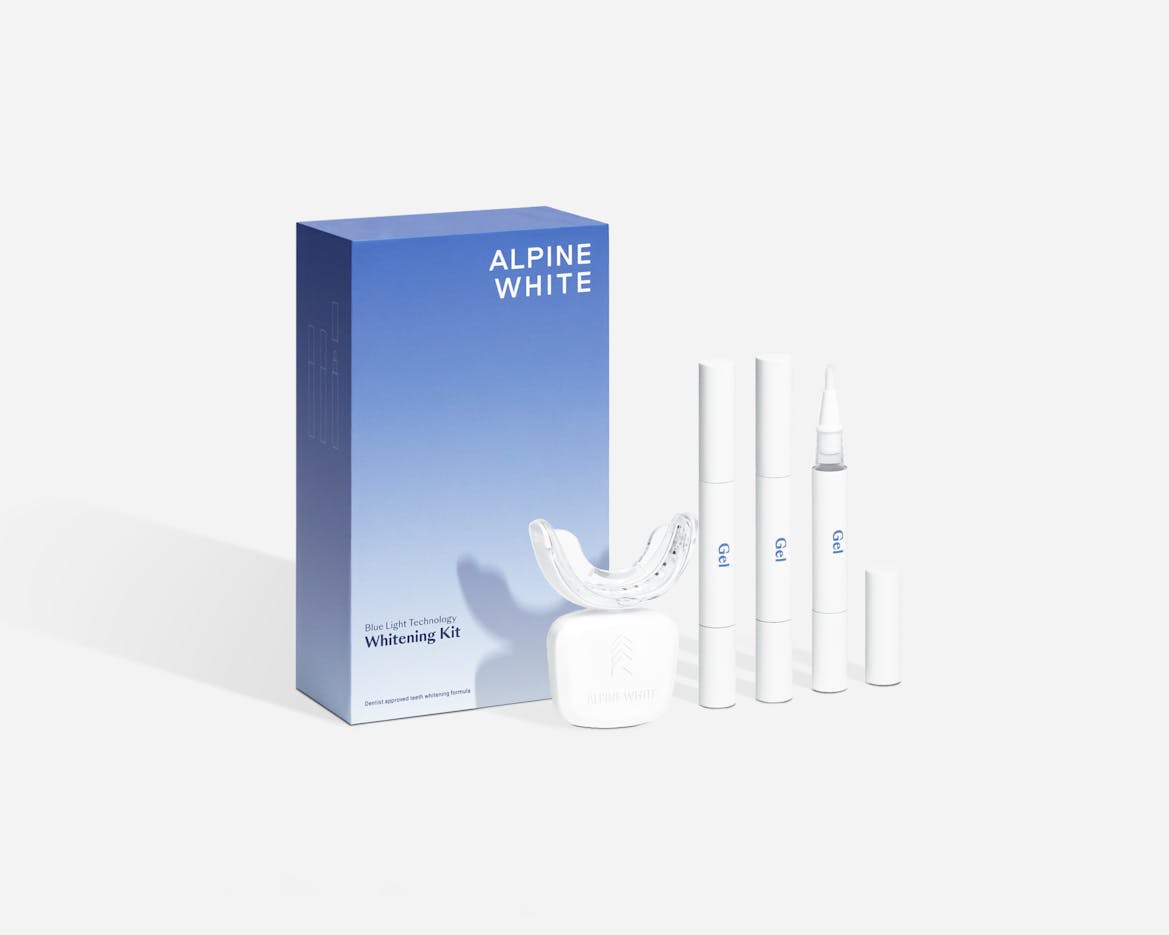
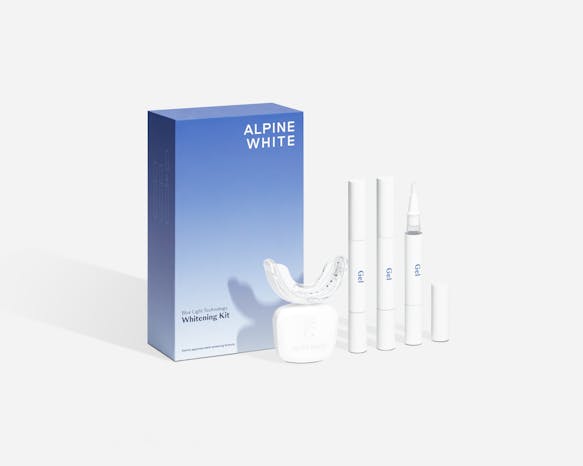
For fast and gentle teeth bleaching at home. The whitening LED light and the specially-developed whitening gel ensure visibly whiter teeth after just three days. Application for only 15 minutes daily.
- Based on our clinically and dentally tested formulation
- Use for just 15 minutes daily
- Whiter teeth after 3 days
Risks of teeth whitening
You should refrain from whitening your teeth for health reasons:
- Pregnant and breastfeeding women
- Children
- People with serious illnesses
Teeth whitening is well researched and scientifically documented due to its growing popularity. When used correctly, lightening your tooth color is not dangerous. In rare cases, the following side effects may occur:
- Increased sensitivity
- Irritation of the gums
- Damage to the tooth nerve (only in the case of caries)
- Alteration of the tooth surface
- Crowns, veneers and fillings cannot be bleached
Some patients experience hypersensitivity to cold and heat for a short time during the treatment. There may also be slight pain in the necks of the teeth.
However, such discomfort should disappear after 24 hours at the latest. You can avoid any pain by taking a painkiller before or after whitening your teeth. However, if the pain is long-lasting, we recommend that you seek advice from a dental professional.
If you do your home bleaching without the advice of your dentist, you must be careful not to do it too often. Doing it too often or intensively can damage the tooth structure.
How harmful is bleaching for the teeth?
When done correctly, the teeth whitening process is harmless. Pay attention to the requirements:
- Good oral health
- Healthy teeth
- No gingivitis
- Existing fillings are tight
- Teeth affected by caries are restored
What are the teeth whitening costs in Switzerland?
Costs for whitening vary greatly depending on the method. The price for professional power bleaching is between CHF 200 and 450. A dentist-made tray for bleaching at home costs around CHF 600. Our Alpine White Whitening Kit for quick teeth whitening at home costs CHF 79.90.
How long does teeth whitening last?
How long your bright white teeth last depends on your dental care after whitening. For 48 hours after bleaching, you should completely avoid stimulants that can cause strong discoloration. If you permanently avoid all discoloring stimulants (e.g. nicotine, red wine, coffee), you will achieve a long-lasting result.
How often can you use bleaching products?
There is no conclusive opinion on how often you should whiten your teeth. You should only whiten your teeth as often as necessary to achieve your desired whitening result. You can have a home whitening session up to twice a year without hesitation if you give your teeth a break after each session. You can use gentle care products such as Whitening Foam during the break.
Bleaching in the Alpine White Studio
In our Alpine White Studio, you can have your bleaching done professionally and without harmful ingredients. With our in-office bleaching, you can whiten your teeth by up to 7 shades. The appointments are carried out by experienced dental hygienists. You can easily book your appointment online. Learn more about the treatment here.
